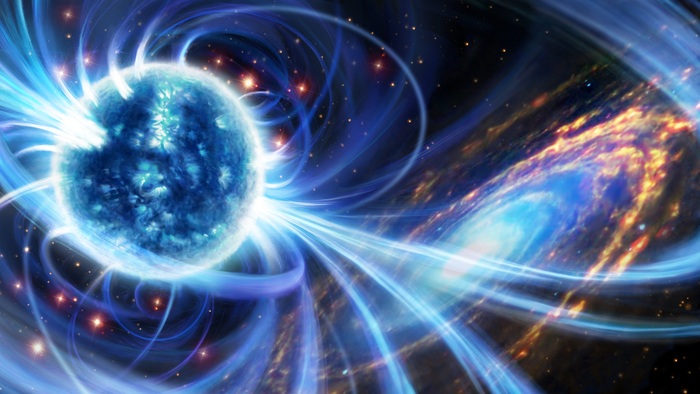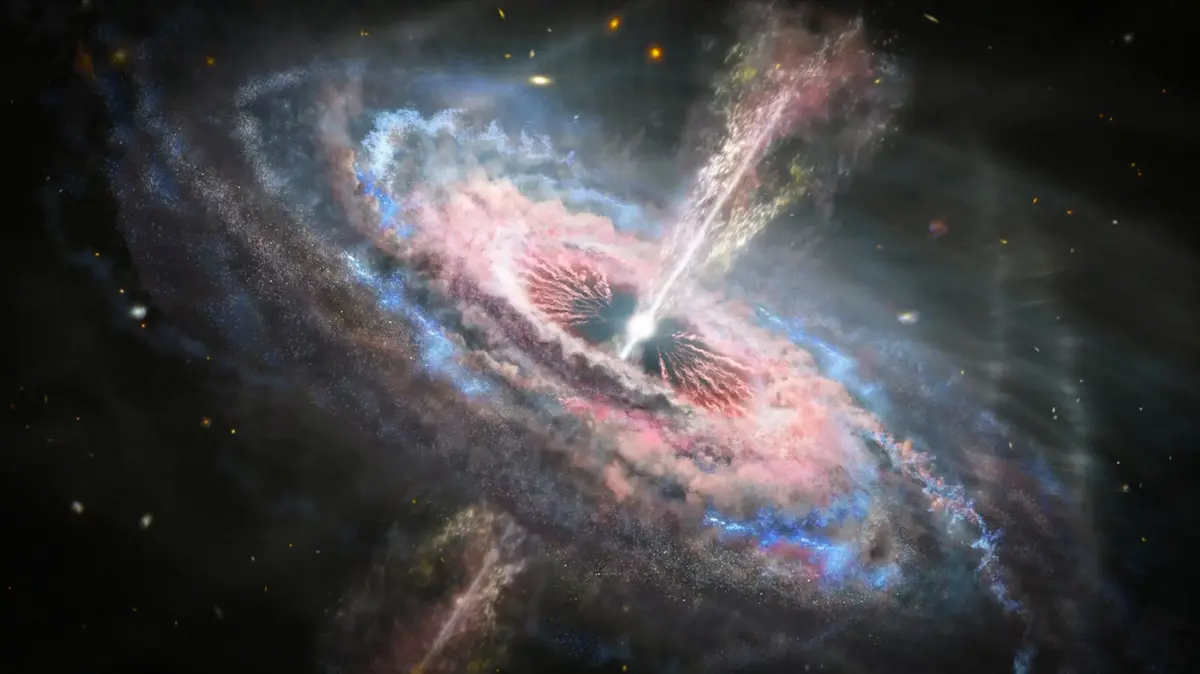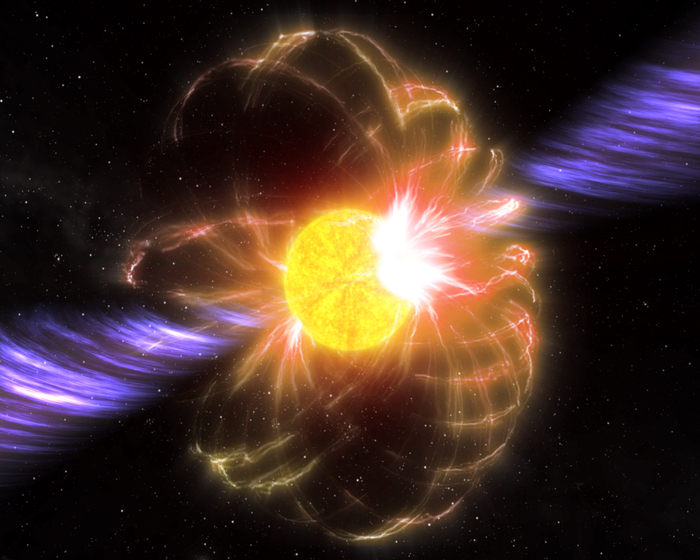The closest fast radio flash to Earth has been identified, even 40 times closer than any other observed so far: called FRB 20200120E, it is located 'just' 12 million light years from us and has exploded in an unexpected region, a rich globular cluster of ancient and not young and massive stars as expected.
The discovery, which could change the way we search for and study these mysterious phenomena discovered only a few years ago, is published in an article in the journal Nature and another in Nature Astronomy by an international group of experts in which researchers of the National Institute of Astrophysics (Inaf).
Artist's impression of extremely fast radio signals from a cluster of ancient stars (left) near the spiral galaxy Messier 81 (source: Daniëlle Futselaar / ASTRON)
The fast radio flash FRB 20200120E, which repeats itself over time, has its source in the Bode Galaxy (M81 or NGC 3031), in the direction of the constellation Ursa Major.
To study it at the highest possible resolution and sensitivity, the scientists combined measurements from the 12 telescopes of the European VLBI Network (EVN) and integrated them with data from several other telescopes.
Among the antennas involved, all the INAF radio telescopes are included: the radio telescopes of Medicina (Bologna) and Noto (Syracuse) in VLBI mode, and the Sardinia Radio Telescope (Cagliari) as single dish and VLBI.
Experts propose that FRB 20200120E comes from a highly magnetized neutron star formed by the accretion-induced collapse of a white dwarf or the merger of compact stars into a binary system.
Artist's impression of the region of origin of the fast radio burst, a magnetar in an ancient globular cluster (in red) near the galaxy M81 (source: Daniëlle Futselaar / ASTRON)
Analyzing the data in detail, it emerged that some flashes were shorter than expected: up to a few tens of nanoseconds.
"This tells us that they come from a tiny volume in the smallest space of a football field, perhaps only tens of meters in diameter," explains Kenzie Nimmo, a researcher at Astron and the University of Amsterdam and first author of the Nature Astronomy paper.
"Some of the signals we have measured are short and extremely powerful. This suggests that we are indeed seeing a magnetar, but in a place where they have not been found before."












